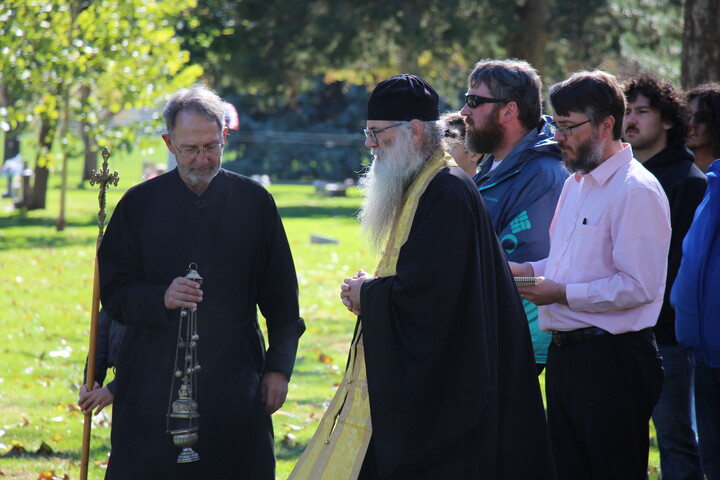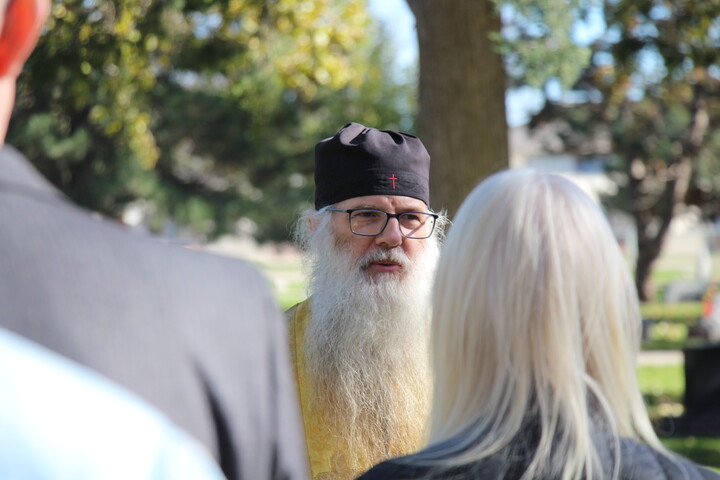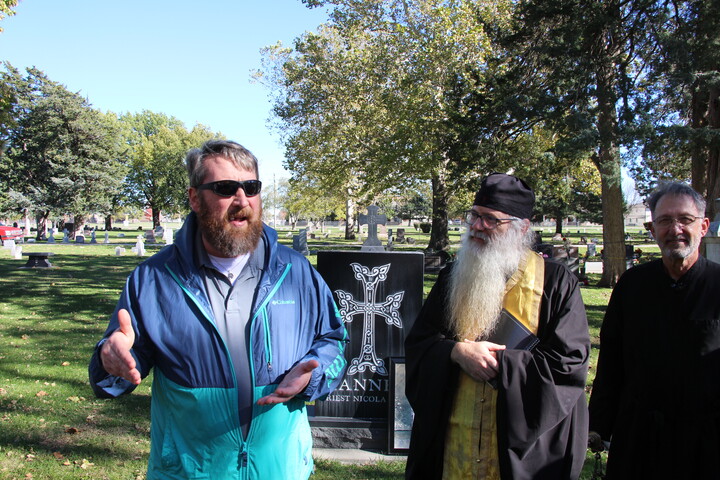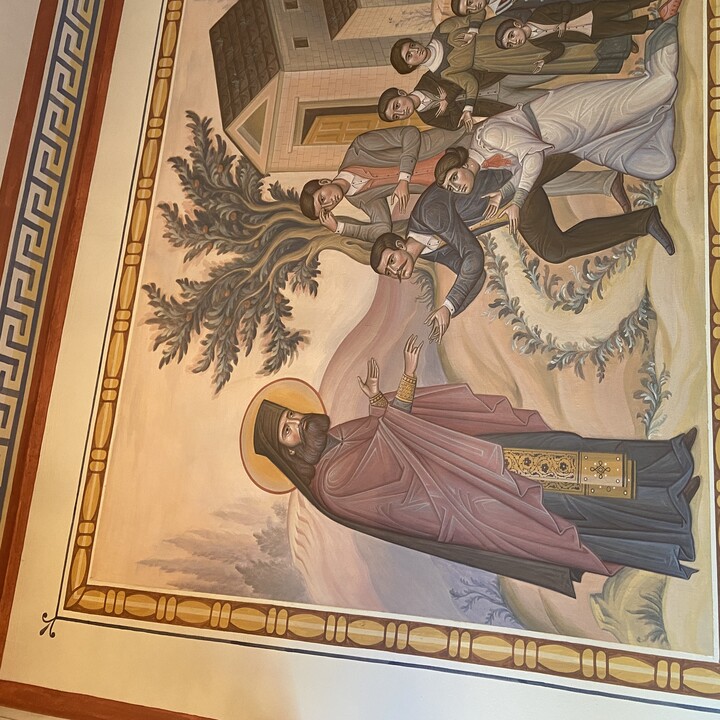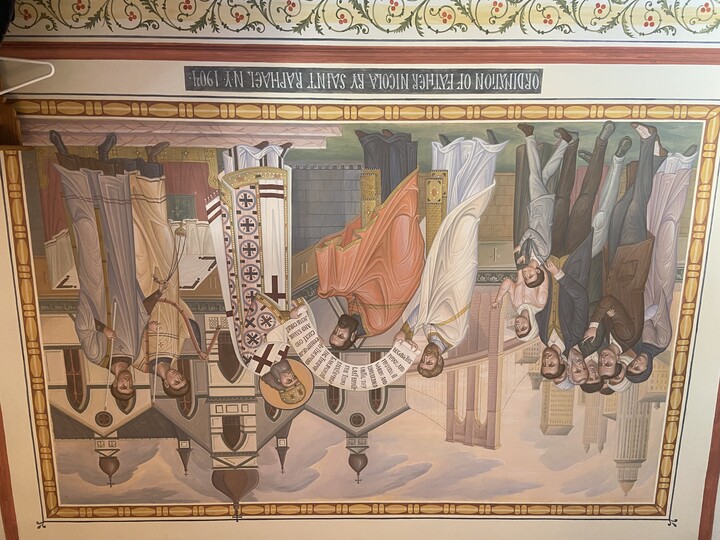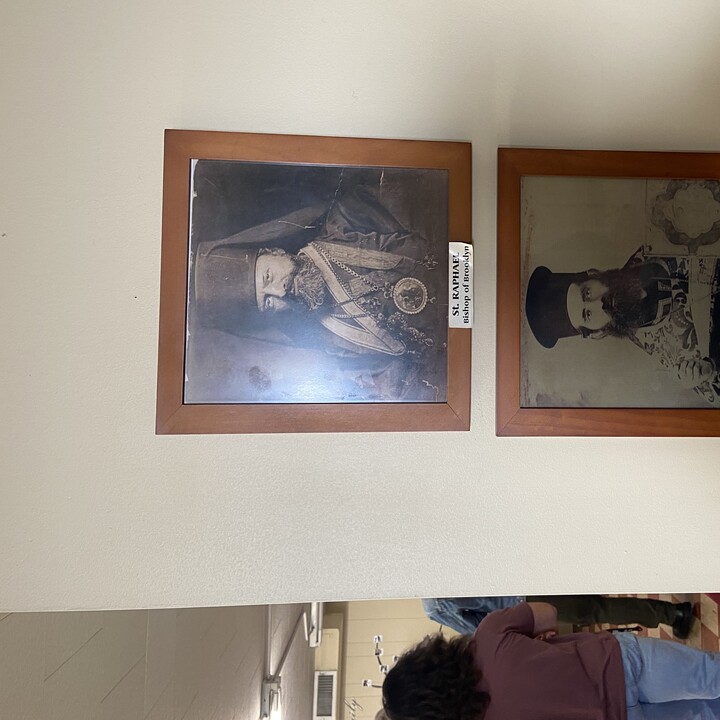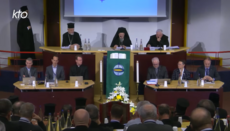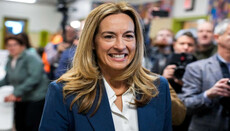Trisagion Service Held for 107th Anniversary of Fr. Nicola Yanney’s Repose
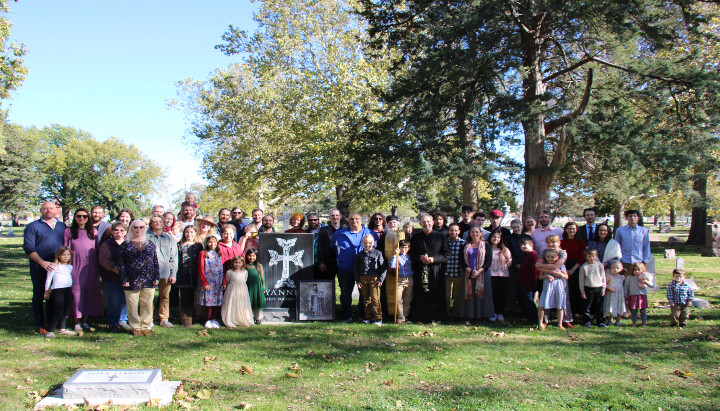
The “Apostle to the Plains” has a strong case for canonization and is venerated by an ever-growing number of Orthodox Christians.
KEARNEY, NE — St. George Orthodox Christian Church, founded by St. Raphael of Brooklyn, is the oldest of 50 parishes in the Antiochian Diocese of Wichita and Mid-America. Its first-ever priest, Fr. Nicola Yanney, was the first priest ordained by St. Raphael, as well as the first Arab man to be ordained to the priesthood in the United States.
As the first Arab Orthodox Christian priest to regularly serve west of the Mississippi River, Fr. Nicola not only pastored his local community at St. George, but also traveled extensively, taking on the responsibility that brought St. Raphael to the U.S. in the first place — to find and minister to the lost sheep of Antioch. As one priest, he covered the area from the Rocky Mountains to the Mississippi River and from the Canadian border to the Mexican border.
Despite suffering the death of his wife and daughter less than two years before his ordination, Fr. Nicola continued to raise his four children as a widower and accepted the call to the priesthood when his community chose him for the role. Spending months away from home at a time, Fr. Nicola would eventually lay down his life during the Spanish Flu epidemic in 1918, as he exposed himself to the disease countless times over while traveling to various communities to bring the Holy Mysteries to the sick and suffering. Much more can, and will, be said about Fr. Nicola in future stories from UOJ-USA. This brief history, however, is the short version of why Fr. Nicola is considered a saint.
When one enters St. George in Kearney, Neb., they are immediately in the presence of iconography depicting the holy man. To the left is a depiction of St. Raphael’s visit to the Yanney homestead in 1899, in the center is a depiction of Fr. Nicola communing the sick in 1918, and to the right is the ordination of Fr. Nicola by St. Raphael in New York, 1904.
In the nave, there is an icon of St. Raphael and Fr. Nicola holding up the church, and Fr. Nicola’s Gospel book also remains out for veneration. Even when one enters the fellowship hall, the wall to the right of the stairs contains two photos: one of St. Raphael, and one of Fr. Nicola.
Following the Liturgy, potluck, and Sunday school at St. George this past Sunday, the faithful filed over to the Kearney Cemetery, where a black gravestone containing a white cross stands out from the rest, with the front simply saying:
YANNEY
Priest Nicola Elias
The back contains important dates: his birth, marriage, arrival in Nebraska, rising through the ranks of reader, subdeacon, deacon, and priest in a span of a few weeks, and finally, his death. The bottom, which those who have studied Fr. Nicola’s life have no doubt about, says, “MEMORY ETERNAL!”
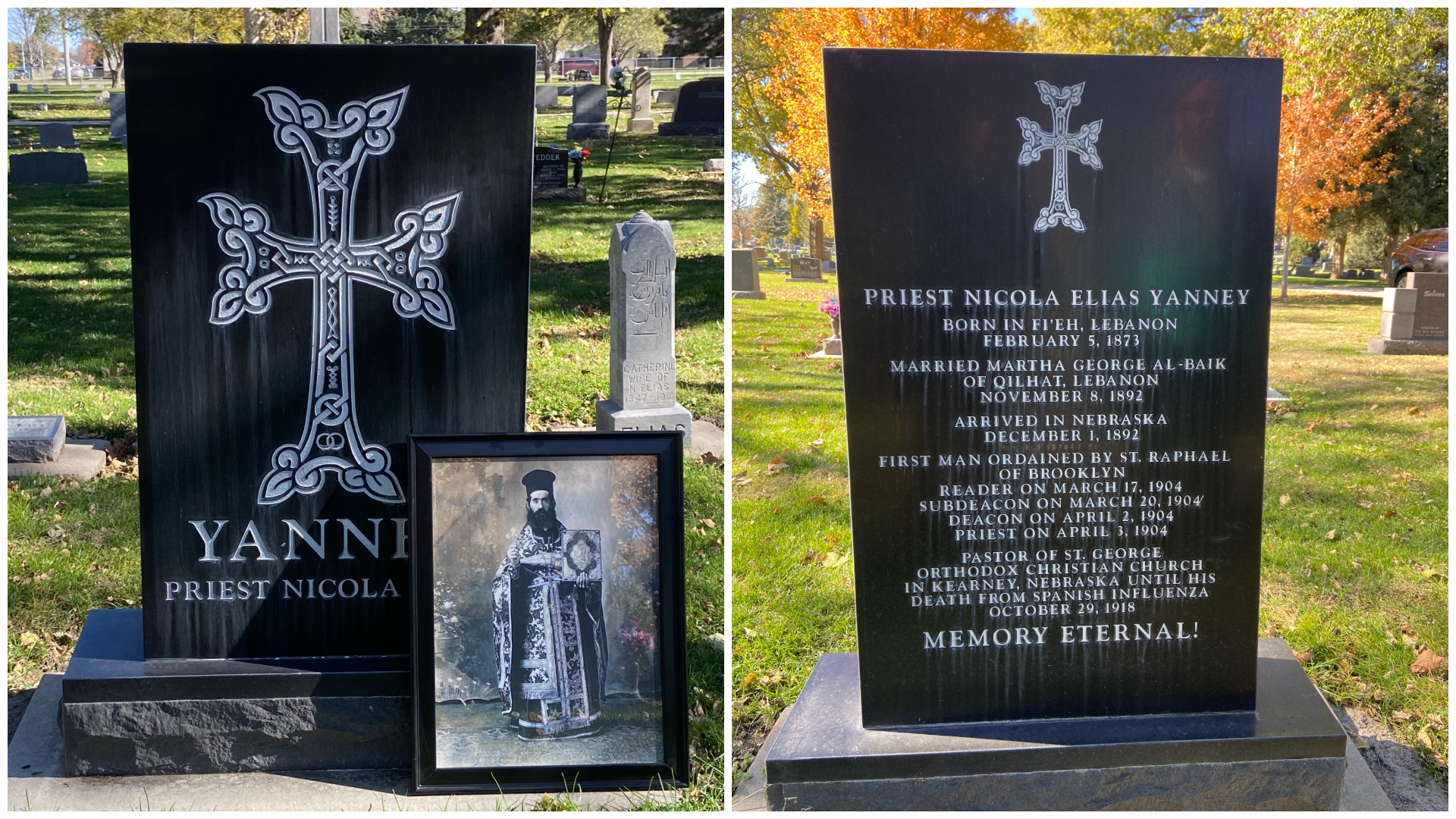
The front and back of Fr. Nicola's gravestone. Photo: Aaron Hickman/UOJ-USA
Fr. Christopher Morris, who has served the St. George parish since 2006, offered the Trisagion prayers for Fr. Nicola along with his parishioners, and at its conclusion, he invited those present to share any stories they have about the holy man known as the “Apostle to the Plains.”
Reader Michael Hadley, who offers church tours to the locals in Kearney, shared that, while many of them don’t understand relics the way the Orthodox understand relics, and therefore don’t care as much that there is the grave of a holy man in their town, their eyebrows do go up when he tells them Fr. Nicola’s story.
“When I say, ‘Orthodox people from all over the country come to Kearney to come to the grave of this holy man,’ they’re like, ‘Wow, there’s something there.’ I think that is exhibiting the power of our faith that is really salvific,” he said. “It’s not like we’re just playing dress-up here. This is a real thing. Fr. Nicola is a picture of that… he was doing the real thing.”
Subdeacon Micheal LiaKos shared a story about a particular situation his family was going through, of which the details are not significant. In short, someone he loved very much was suffering.
LiaKos told Fr. Christopher that he had been praying to so many saints, and Fr. Christopher asked him why he didn't just pick one. “I said, ‘OK, it’s going to be Fr. Nicola Yanney.’ I told Fr. Nicola, ‘You lived this life. You lived here. You know what we’re about. Could you please come and help?’”
His wife asked him how long he was going to stand in front of his icons, to which Liakos replied, “As long as it takes. Day after day, as long as it takes.” He remembers praying, “Fr. Nicola, I need your help now.”
One day, the issue that had been causing the suffering in his family was resolved in sudden fashion.
“Where did that come from?” an emotional LiaKos asked. “It came from Fr. Nicola Yanney.”
Hannah Cone’s first experience of Orthodoxy came at the pilgrimage for the 100th anniversary of Fr. Nicola’s repose in 2018. Her husband told her they were going to go to a cemetery and that he didn’t know what they were going to do there. The sentiment was simply that they were “doing Orthodox stuff this weekend.”
“We show up to the cemetery and there are all these men in black waving censers, and I just had no clue what was happening,” Cone said. “Then we came to Vespers that night, and it was a Hierarchical Vespers because Bishop Basil was in town. Once again, I just remember the flow of the black robes. They just did circles, and I didn’t understand what was going on, but my husband was hooked. ‘This is it. This is the One True Faith.’”
They started following a routine of every other Sunday at St. George and every other Sunday at their nondenominational church. Finally, Cone’s husband said they needed to pick one, as it was confusing for their children. The kids replied, “Well it’s obvious, Mom. You have to pick St. George. You know, the One True Faith?”
After making the commitment for an extended period of time, Cone still felt as if she was not convinced. On Theophany in 2021, she remembers sitting in the balcony and feeling as if she was not ready to be Orthodox yet. Her kids and husband were, though, and she encouraged them to go ahead and get baptized without her, offering her full support. Her husband responded by saying that it was something he wanted to do as a family.
In that period of uncertainty, Cone called out to the three most familiar figures for the community.
“This is how disrespectful I was — I was like, ‘OK George, Nicola, and Raphael. Come on!’ In my heart I got an immediate response: ‘What do you need to do this?’ My instinct was that I needed my parents' favor,” she said, “I needed them to give me the OK.’”
Cone grew up in Mexico, and her parents are Pentecostal missionaries there. She realized that her biggest hangup in being received into the Church wasn’t anything to do with the theology or practices, but rather her wanting her parents’ approval.
While continuously asking the intercessions of St. George, St. Raphael, and Fr. Nicola, she sent them an email. After a few days, her dad responded with a beautiful message acknowledging the growth he had seen from both her and her husband and said, “May it be blessed.”
“Through their prayers,” Cone said, referring to the three beloved saints of the Kearney community while making the sign of the cross.
“That’s how this happens,” Fr. Christopher concluded. “God is wondrous in His saints, and there are a lot of other stories like that.”
There is a genuine belief among the parishioners at St. George that Fr. Nicola is numbered among the saints. This isn’t an educated guess or a rational approach based on comparing his life to other hagiographies and figuring out the math behind what makes a saint, and it isn’t a simple case of honoring someone local who did good for the community. This reality of Fr. Nicola’s sanctity is felt in their lives and seen in their flourishing parish.
“I remember when Fr. Christopher first came here, there were only about 10 people in church,” LiaKos said. “Now look at it. That’s through Fr. Christopher and Fr. Nicola Yanney, and through the grace of God, this church will always be here.”
Everyone is generally aware of the Feb. 27 feast of St. Raphael, which falls on the day of his repose. The Antiochians also commemorate St. Raphael on the Saturday before the feast of the Holy Archangels (Nov. 8), and at St. George this past weekend, the troparion rang through the church one more time.
“Rejoice, O Father Raphael, Adornment of the Holy Church!
Thou art Champion of the true Faith,
Seeker of the lost, Consolation of the oppressed,
Father to orphans, and Friend of the poor,
Peacemaker and Good Shepherd, Joy of all the Orthodox,
Son of Antioch, Boast of America:
Intercede with Christ God for us and for all who honor thee.”
St. Raphael and Fr. Nicola’s lives were different, but intertwined. While St. Raphael is well known and beloved in the U.S., one must ask: is there anything in this hymn that doesn’t apply to Fr. Nicola, the man who inherited this vast territory from St. Raphael and gave his life ministering to the faithful there?
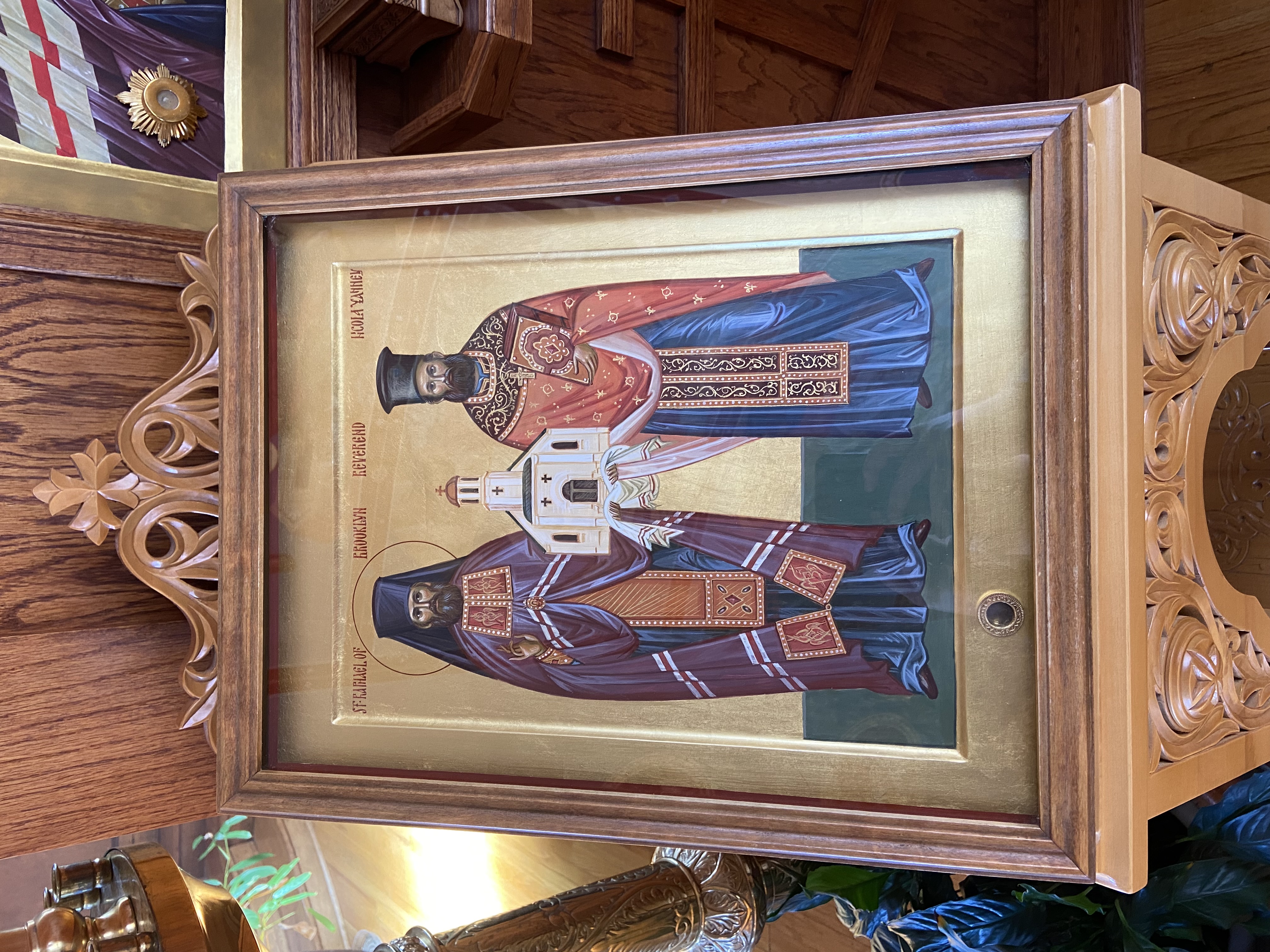
The founder and first priest of St. George in Kearney. Photo: Aaron Hickman/UOJ-USA
If this were multiple choice, the parishioners of St. George would say what applies to Fr. Nicola is “all of the above.”
“Abounding in the love of Christ God, thou didst faithfully take up thy cross to become a living sacrifice. Neither sickness, suffering, nor sorrow could keep thee from thy scattered flock: Steadfast Cedar of Lebanon, O Righteous Father Nicola, Apostle to the Plains, pray that Christ God grant us His great mercy.”
Previously, UOJ reported that 20 pilgrims from St. John of Kronstadt Orthodox Church (OCA) in Lincoln, Neb., ventured west to Kearney to visit and pray at the gravesite of Fr. Nicola Yanney.






